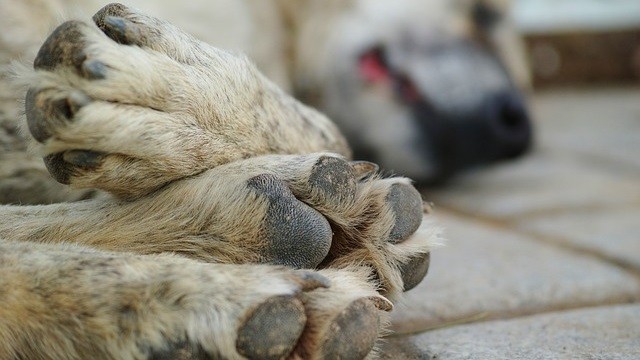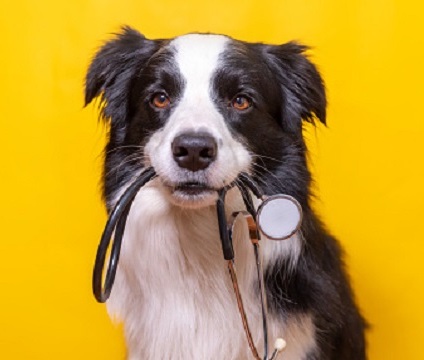Help! My Dog is Limping On A Back Leg – What Could Be The Cause?
If you notice your dog limping on a back leg, it’s important to investigate the cause. Unfortunately, it could be a sign of a serious problem. Let’s take a look at the possible causes and treatments for back leg problems in dogs.
- Sudden limping indicates potential trauma, while gradual limping hints at chronic conditions like arthritis or hip dysplasia.
- Common causes include sprains, strains, arthritis, hip dysplasia, cruciate ligament tears, and neurological issues.
- Limit your dog's activity immediately to prevent worsening the condition if limping occurs.
- Inspect your dog's leg for visible injuries; avoid excessive bending to prevent further damage.
- Always consult your veterinarian if limping persists, especially if unusual symptoms appear.
Why Is My Dog Limping On A Back Leg? Gradual Onset vs. Sudden Limping in Dogs

When a dog starts limping on one of their back legs, it can happen suddenly or gradually over time. The onset of limping can give important clues to the underlying cause.
Sudden limping is often associated with trauma or injury, such as a sprain, strain, or fracture. Your dog may have been playing, running, or jumping when it suddenly yelped or stopped using the affected leg.
On the other hand, gradual onset of limping may be more indicative of chronic conditions such as arthritis, hip dysplasia, or a slow-growing tumor. Your dog may start showing subtle signs of discomfort, such as stiffness or reluctance to move before the limp becomes more pronounced.
Common Causes Of Hindlimb Lameness In Dogs

There are several reasons why a dog might be limping on one of their back legs. Some of the most common causes include:
- Musculoskeletal Issues. Dogs can sprain or strain their muscles, ligaments, or tendons, or even break a bone, from jumping, running, or other physical activities. This type of limping is normally sudden onset.
- Injuries. Dogs are adventurous and mischievous creatures… And it isn’t uncommon for them to get themselves into risky situations and injure themselves! Cuts and grazes can cause hindlimb lameness, and even a minor injury such as a thorn in a paw pad can cause severe limping.
- Arthritis. As dogs age, they may develop arthritis in their joints, which can cause pain and stiffness. This can cause gradual lameness to develop, which often goes unnoticed for some time.

Not sure if your dog is sick?
Get a better idea of your dog’s current health status with our quick quiz.
- Hip dysplasia. This genetic condition is characterized by abnormal development of the hip joint, which can lead to pain, stiffness, and limping.
- Cruciate ligament tear. The cruciate ligament is an important stabilizing ligament in the knee joint, and if it tears, it can cause significant lameness. Dogs with cruciate ligament injuries normally refuse to place the affected limb on the ground, preferring to hop on three legs.
- Neurological problems. Certain neurological conditions can affect a dog’s ability to use its limbs properly, leading to limping or weakness.
What To Do If Your Dog Is Limping On A Back Leg

If you notice that your dog is limping on one of their back legs, there are several steps you can take to help them feel more comfortable and determine the underlying cause. With any type of limping, it is vital to immediately limit your dog’s activity to prevent the problem from getting any worse.
Next, carefully inspect your dog’s leg for any signs of injury, such as cuts, scrapes, or swelling. Whilst doing this, take care to bend or flex the limb as little as possible, as this could make any potential musculoskeletal injuries first. If you find an obvious cause for the lameness, such as a wound or particularly painful area, seek veterinary advice straight away.
But what if the lameness is intermittent or you can’t see a reason for it? Allow your dog to rest for a while, then resume gentle exercise. If the problem does not recur, excellent news! However, it is always worth mentioning to your veterinarian at your dog’s next medical review. That way, any underlying problems can be ruled out.

Maven Pet
Health Monitor
#1 Vet-recommended pet monitor! Tracks activity, rest, respiratory rate, water intake, scratching and other health indicators 24/7
If you notice any unusual or concerning symptoms, it’s always best to look into them. Remember that Maven is here to help!
Maven Pet focuses on improving the quality of life of our pets with technology, using artificial intelligence (AI) to enable proactive pet care. By accurately collecting and monitoring pet data 24/7 and flagging any irregularities, Maven Pet empowers pet parents and veterinarians to stay ahead of potential health issues, ensuring the well-being and longevity of our beloved companions.




